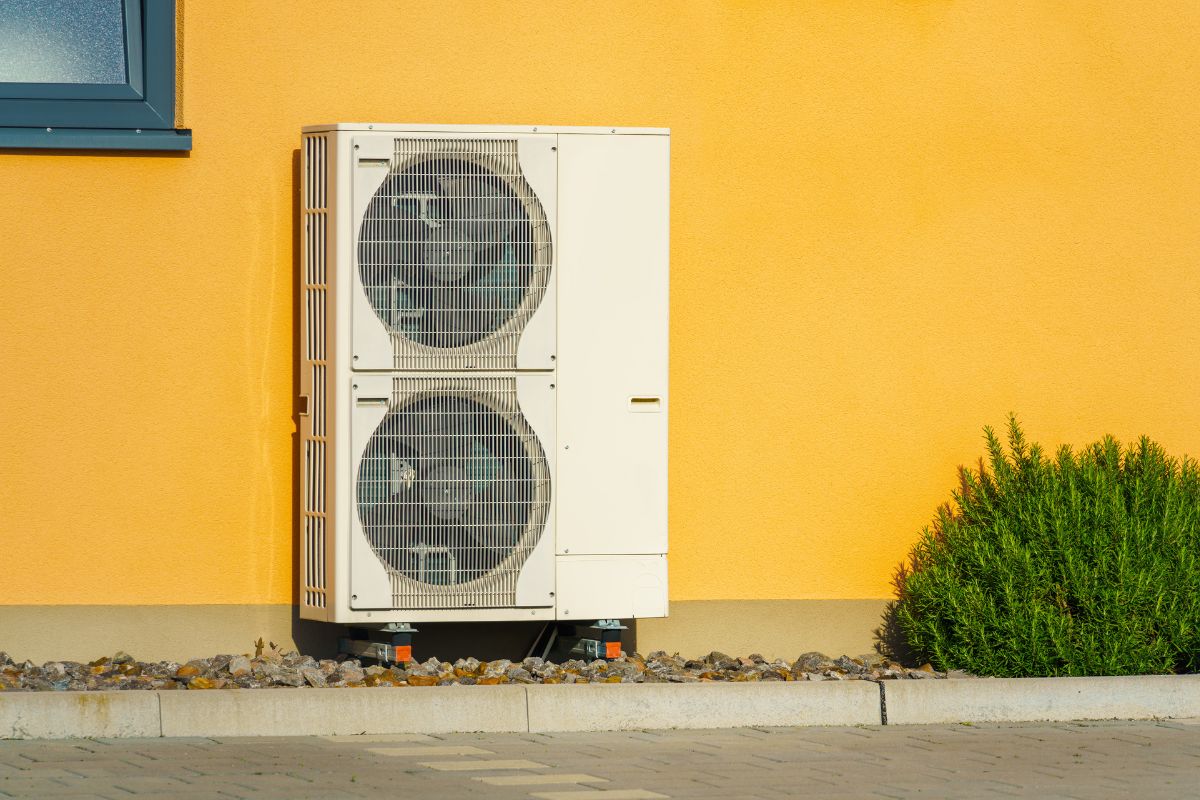Rheem heat pump troubleshooting
Heat pump acting up? Before you call a repair person, check out our Rheem heat pump troubleshooting tips. You may be able to save yourself the expense and hassle of a service visit.
But if you’d rather leave the troubleshooting to the pros, click below to connect with a local HVAC technician who can get your heat pump working ASAP.
Fix my heat pump now!
Get a quoteRheem heat pump is not running
First, check the thermostat. Set it to “heat” if you want the heat on. Set it to “cool” if you want the AC on. Set it to “auto” instead of “on” or “off.” Adjust the temperature setting to see if that makes it kick on.
Try the opposite of what you want – if you need AC, set the thermostat to “heat” and vice versa. If your system will deliver one and not the other, the issue is likely the reversing valve. You’ll need to call an HVAC technician to replace it.
Dust in and around the thermostat with compressed air. The thermostat’s sensors may be dirty, preventing it from reading the temperature correctly.
Make sure your Rheem heat pump has power. Check that its reset button isn’t tripped, and reset it if needed. The reset button is generally red with two wires protruding from it (but that may differ on your model). Refer to your user’s manual for help locating it. You may need to remove your heat pump’s cover to access it.
If your heat pump connects to a power switch, make sure the switch is on. Also, check your electrical box for a tripped circuit breaker. If you find one, reset it.
Finally, listen for sounds coming from your heat pump. If you hear a clicking when the heat pump should turn on, your start capacitor is the issue. Call an expert for repair – it’s not a DIY job.
Rheem heat pump is leaking
Heat pumps collect condensation, so seeing water in or near your heat pump doesn’t automatically mean something’s wrong. However, if you see water dripping or a puddle around the unit, you should check it out.
Heat pumps typically sit on a drain pan intended to collect water. Your drain pan may be overflowing if it’s clogged with mold or debris. Clean it out if necessary and soak up excess water with an old towel or a shop vac. Check for cracks. If you notice any damage, you’ll need to replace the part. Call a local Rheem dealer for help.
Examine the condensate pan. It’s a small pan with raised edges inside your heat pump. Clean it out if it’s full of mold or debris. Check for cracks. If you notice any, you’ll need to replace the pan. Call your local dealer for help.
Find the tubing used to drain water within your heat pump. It’s likely PVC or a plastic hose. If you’re able to, take it apart and examine for clogs or cracks. If it’s clogged, suck out blockages with your shop vac or flush them out with your garden hose.
While you’re checking the inside of your heat pump, take a look at the evaporator coil. It’s a piece with U-shaped metal tubing on the ends. If the evaporator coil looks frozen, you may have a refrigerant leak. Call a professional to locate and repair the leak.
If the evaporator coil appears dirty, it could be malfunctioning, causing water to drip. Turn off the heat pump and clean it with coil cleaner and a soft cloth.
Call an HVAC expert for service if these Rheem heat pump troubleshooting suggestions don’t do the trick.

Rheem heat pump is short cycling
Set your thermostat to “auto” instead of “on.” If you’re using the AC, set the temperature down a few degrees. If you’re using the heat, set the temperature up a few degrees to see if that makes a difference.
Dust in and around your thermostat with compressed air. If the sensors are dirty, it may be short cycling because your thermostat can’t read the indoor temperature accurately.
Check the air filters in your heat pump and indoor air registers. You should change them regularly. If they’re full of dust, they inhibit airflow, which may cause short cycling. Buy new filters and replace yours if necessary.
Feel around your home for drafts that may indicate air leaks. The Environmental Protection Agency has a guide with best practices. If you find any leaks, especially around windows and doors, seal them with weatherstripping. Air leaks may cause your HVAC system’s cycles to become irregular.
Check your ductwork for blockages or leaks. You can see some of your ductwork by removing your registers and looking in with a flashlight. If you see any items that have fallen in, remove them. If you see any holes, repair them with duct tape or sealant. If you haven’t had a full checkup of your ductwork recently, consider hiring a duct cleaning company.
Open the louvers on your registers. Ensure they’re clear of furniture, decor, and household clutter. Any kind of airflow blockage can lead to short cycling.
If these Rheem heat pump troubleshooting recommendations don’t stop the short cycling, call a local HVAC expert to give your system a full evaluation.
Rheem heat pump troubleshooting resources
Rheem has a section on its website with information to help fix your HVAC equipment. There’s also a Homeowner Resource Center with materials on warranties and parts.
If these Rheem heat pump troubleshooting tips don’t get your system back to work, click below to connect with an HVAC technician who can help.
Connect me with a local HVAC professional.
Yes, please!